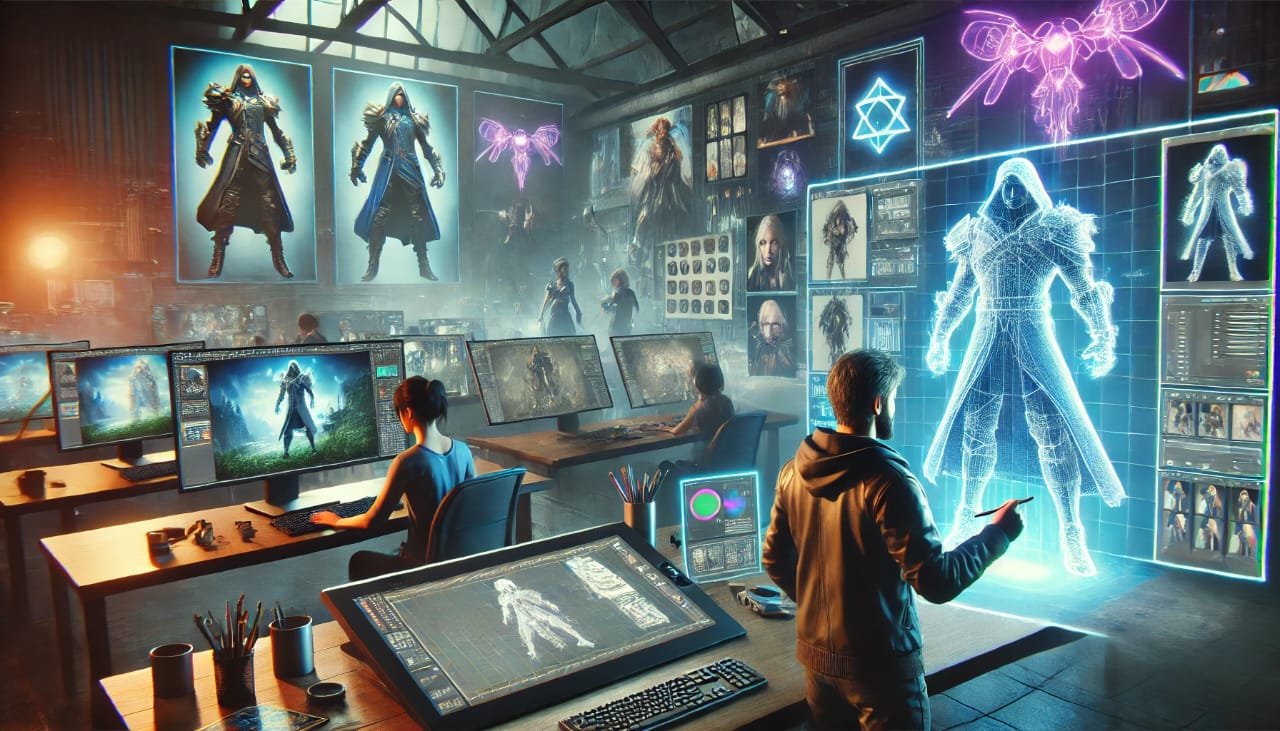In the dynamic and ever-evolving world of game development, character design plays a pivotal role in creating engaging and memorable player experiences. The success of any game is often closely tied to the quality of its characters — their design, animations, and interactions within the game world. This is where professional Character design services and specialized Game art outsourcing studios come into play. The impact of these art services on game character design and development cannot be overstated, as they directly influence the visual appeal, storytelling, and overall player engagement of a game.
Understanding the Role of Art Services in Character Design
Character design is a critical component of a game’s visual identity. A well-designed character not only serves as the face of the game but also communicates essential aspects of the game’s story, tone, and world. Art services, particularly in character design, are responsible for bringing these aspects to life. They include everything from initial sketches and concept art to 3D modeling, texturing, rigging, and animation.
1. Initial Conceptualization and Visual Identity
Every game character starts with a concept, often a sketch or digital artwork, which lays the foundation for their look, personality, and role in the game. Character design services are crucial in this stage, as they bring creative ideas to life while ensuring that the character fits the overall art direction of the game. A well-thought-out character design serves as a blueprint that will be refined and developed further throughout the game development process.
Professional character designers understand the importance of aligning the character’s visual appeal with the game’s narrative. Whether it’s an armored warrior, a magical creature, or a futuristic robot, the design must reflect the character’s story, abilities, and place in the world. High-quality character design services ensure that the characters stand out, making them more relatable and engaging for the player.
2. 3D Modeling and Texturing
Once the concept art is finalized, the next stage of character development begins: 3D modeling. This is where the character’s design is brought into a digital, three-dimensional space, and it is also where Game art outsourcing studios can play a significant role. Outsourcing 3D character modeling and texturing to specialized art studios can save time, reduce costs, and ensure high-quality results.
The outsourced team typically works on transforming 2D designs into 3D models, carefully sculpting every detail to match the original vision. Texturing involves applying materials and surfaces to the character, such as skin, clothing, and armor, making them look realistic or stylized, depending on the art style of the game. This step can make a huge difference in how immersive and believable the character feels.
3. Rigging and Animation
After the character is modeled and textured, the next critical step is rigging, which involves creating the character’s skeleton and defining how the character’s limbs, joints, and facial features move. Game art outsourcing studios often have dedicated teams with expertise in rigging to ensure that characters move fluidly and realistically. Proper rigging allows for better animation, which is essential for realistic or expressive character movements.
Animation breathes life into the character, making them react, move, and express emotions. Whether it’s a simple idle animation, an elaborate combat sequence, or intricate facial animations to convey emotions, the character’s movement is critical for engaging players. The right animation can evoke emotions, help tell the story, and make the gameplay more immersive.
The Benefits of Game Art Outsourcing Studios in Character Design
While in-house teams are crucial to a game’s success, outsourcing certain aspects of character design to specialized Game art outsourcing studios offers multiple advantages. Here are some key benefits:
1. Expertise and Specialization
Game art outsourcing studios specialize in creating high-quality game assets. These studios have teams of highly skilled artists, animators, and designers who are experts in creating characters that are visually appealing and functional within the game world. They understand the latest trends and technologies and can adapt to various game styles, whether it’s a hyper-realistic look or a stylized cartoonish aesthetic.
2. Cost Efficiency
Outsourcing character design services to external studios can be more cost-effective than building an in-house team. These studios often operate in regions with lower operational costs, providing high-quality services at competitive prices. By outsourcing, game developers can save on recruitment, training, and infrastructure costs while still getting top-tier design work.
3. Speed and Flexibility
Outsourcing allows for quicker turnaround times, as studios are equipped with the resources and manpower to handle large volumes of work efficiently. Whether a game is in early development and requires several concept designs or nearing the final stages and needs refined models, outsourcing studios can provide flexibility in scaling the workload as needed.
4. Global Talent Pool
Game art outsourcing studios often work with global teams of artists, bringing diverse skill sets and creative perspectives to the table. This diversity can result in more innovative character designs that stand out in the competitive gaming market. Moreover, many outsourcing studios have worked on games for international markets, making them adept at creating characters that resonate with players from different cultures.
The Impact on Player Engagement and Experience
The characters in a game are much more than just visual elements; they are integral to player engagement and the overall game experience. Well-designed characters evoke empathy, excitement, and even fear, as they serve as the player’s avatar or opponent within the game world. Here’s how Character design services and Game art outsourcing studios can influence player engagement:
- Emotional Connection: Players often form emotional bonds with the characters they control or interact with. A well-designed character with a strong visual identity can make the player care about their journey, struggles, and victories.
- Immersion: Immersive game worlds are built on strong character designs. When characters feel authentic, with realistic movements, expressions, and behaviors, they make the player feel more present in the game world.
- Storytelling: Characters are often central to the game’s narrative. Through design, animation, and voice acting, they convey the story and emotions, helping the player connect to the plot.
- Replay Value: Engaging character designs can enhance the replayability of a game. Whether through customizable avatars or compelling NPCs, players are more likely to return to a game where they find the characters dynamic and interesting.
Conclusion
In the competitive world of game development, character design is a powerful tool that can make or break a game. Professional Character design services and the expertise of Game art outsourcing studios are integral in crafting high-quality characters that resonate with players. From conceptualization to modeling, rigging, and animation, these art services ensure that characters are not only visually appealing but also deeply connected to the game’s narrative and emotional core.
By leveraging the expertise of these services, game developers can create characters that not only stand out but also enhance player engagement, contribute to storytelling, and ultimately lead to the success of the game. Whether you’re an indie developer or a large studio, outsourcing your character design and art development can provide the high-quality results needed to compete in the global gaming market.
Also Read: 20 Fun Roblox Games to Play with Friends



